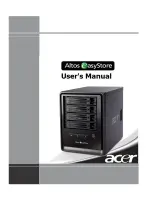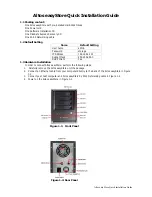
319
hub:
A central connecting device in a network that joins communications lines together in
a star configuration. A switching hub also routes messages and packets
among the computers connected to the network.
hypermedia:
A method of providing multiple connected pathways through a body of
information, allowing users to jump easily from a topic to related or
supplementary material, which may be text, graphics, audio, images or video.
HyperText Markup Language (HTML):
A special coding scheme used to prepare text and
graphics for access over the World Wide Web.
I
icon:
A small picture that represents a function, file, or program.
Industry Standard Architecture (ISA):
An expansion bus design that provides a 16-bit
data path with 16-bit and 8-bit slots. A 16-bit expansion board can use two
adjacent 8-bit slots. See also
EISA
.
infrared port:
A port that allows data to be transferred by infrared signals instead of a
cable. It works on the same principle as a remote control for a television set.
input:
Information received by a computer from a storage device such as a disk, or an
input device such as the keyboard.
input/output (I/O):
Input and output are two of the three functions that computers perform
(the other is processing). Input/Output describes the interrelated tasks of
providing information to the computer and providing the results of processing
to users. I/O devices include keyboards (input) and printers (output). A disk
drive is both an input and an output device, since it can both provide
information to the computer and receive information from the computer.
instruction:
A statement in a computer program that performs a particular function or
task.
Summary of Contents for Magnia 3310
Page 1: ......
















































